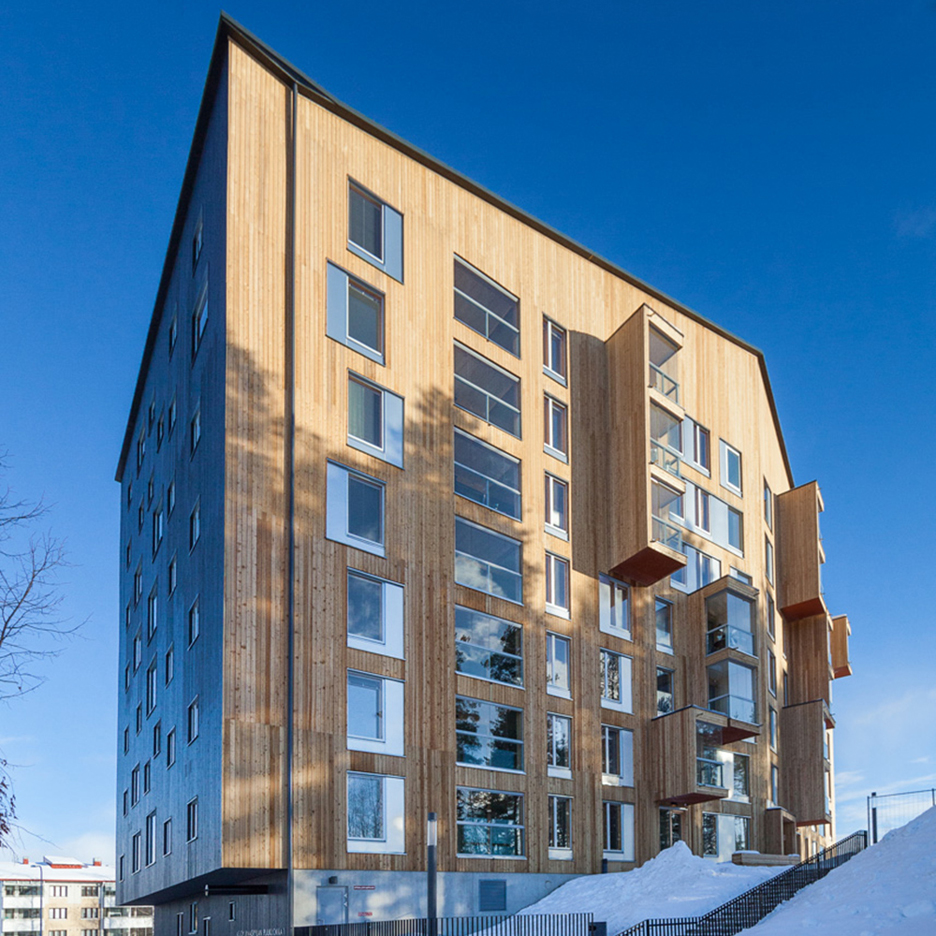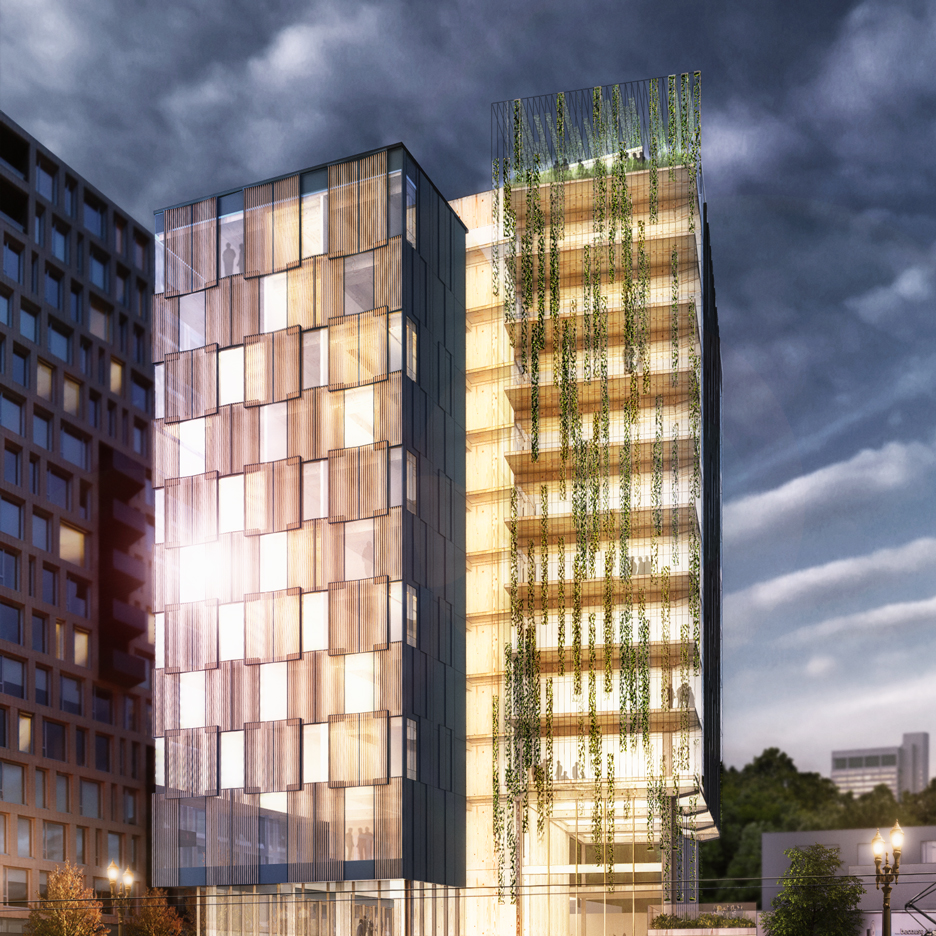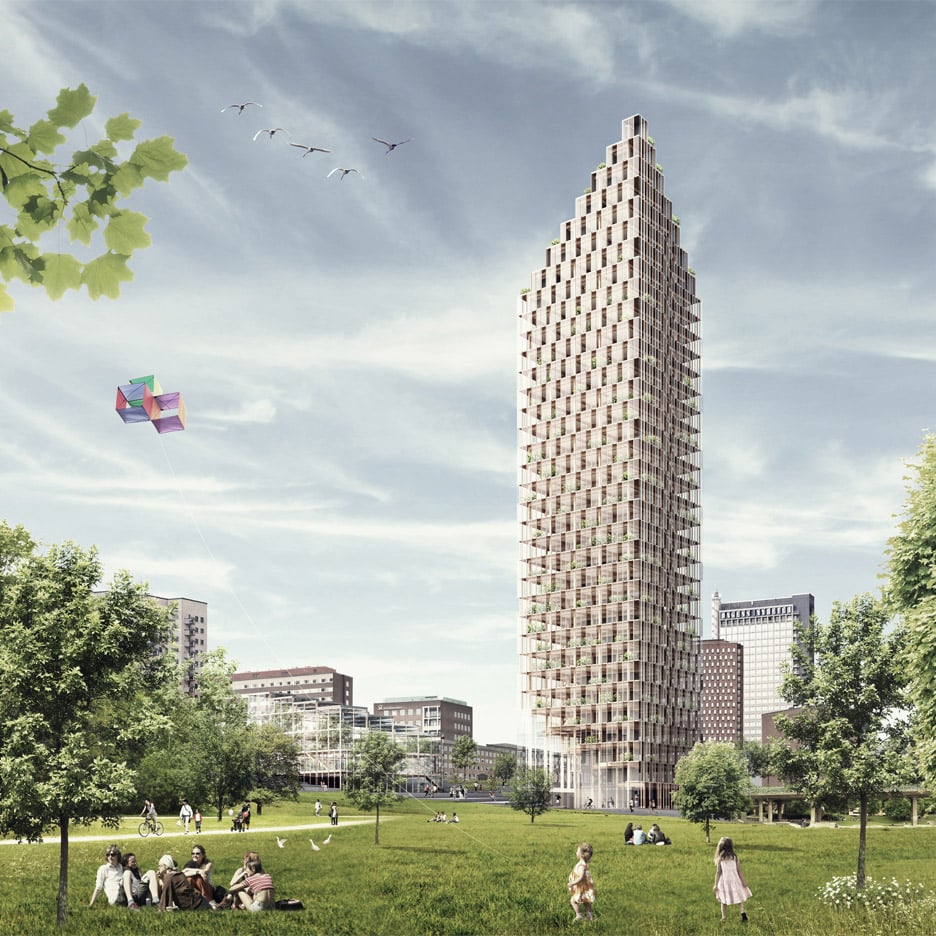Australia becomes latest nation to embrace wooden high-rise buildings
A change to building regulation codes in Australia means that architects will be allowed to build timber-framed structures up to eight storeys in height for the first time.
As the result of a two-year research project, the country's National Construction Code will be altered so that the permitted height of wooden buildings increases from three storeys to eight.
The changes, effective from 1 May 2016, are expected to offer cost savings of up to 15 per cent compared with other construction systems.
The new regulations are more line with buildings codes in North America and Europe, where many seven- to nine-storey wooden buildings have been completed, and a series of timber-framed skyscrapers are proposed.

The research project was led by Forest and Wood Products Australia (FWPA), a nonprofit industry organisation. Managing director Ric Sinclair claims the ruling will offer benefits to local residents, property owners and the domestic building industry.
"This initiative will bring Australia up to pace with much of the rest of the world – so that the building property industry can take advantage of the environmental and cost benefits of domestic timber construction," he said.
"Wood can offer quicker build times, with less noise and disruption for neighbours. It can also offer innovative design approaches," he added.

Finland adopted a similar change to its building codes in 2010, paving the way for an eight-storey wooden apartment block – the tallest of its kind in the country – to be completed last year.
Austria previously prohibited wooden buildings over five storeys, but a seven-storey apartment block was built there in 2013. Meanwhile, a 12-storey timber building is set to be constructed in the United States, and wooden skyscrapers are proposed for Sweden and Canada.
"A look at international trends shows the global sector is embracing both traditional wood and modern engineered wood products in an increasingly broad range of structural and decorative applications," said Sinclair.

The ruling applies to both traditional timber frames and modern engineered timbers, including both glulam and cross-laminated timber (CLT). It is these products, which are considerably stronger and more stable than regular wood, that are making timber high-rises possible.
"This is an exciting step forward for architects and their clients," said James Fitzpatrick of Sydney firm Fitzpatrick and Partners. "It not only gives us new material options to create innovative design solutions for our clients, but it also enables us to deliver more environmentally advantaged and sustainable developments."
"Ultimately, the code change will potentially mean quicker, more cost-effective and environmentally friendlier construction of apartment, office and hotel buildings," he added.
Speaking to Dezeen at the end of 2015, UK architect Andrew Waugh declared: "This is the beginning of the timber age."
He claimed that a CLT structure can be constructed much faster than a concrete building, requires fewer deliveries to site, and offers a far more pleasant environment for construction workers. "It is just better quality building," he said.